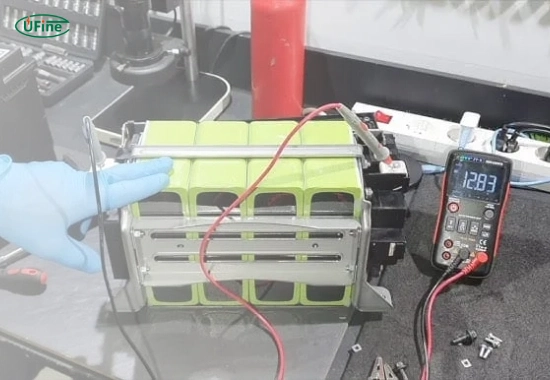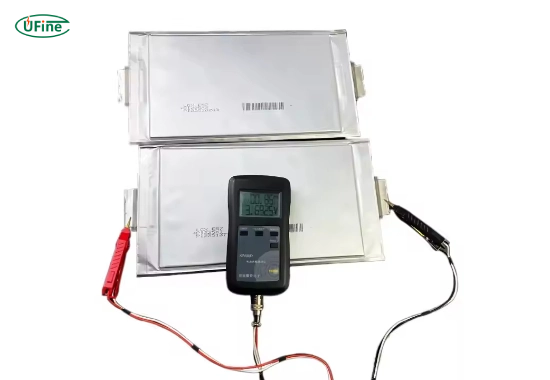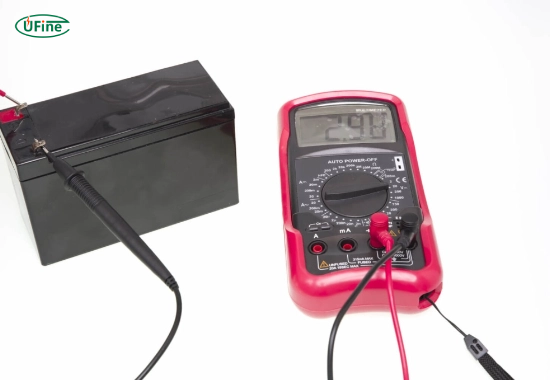Batteries are essential to our daily lives, powering everything from smartphones and laptops to cars and renewable energy systems. However, like any piece of technology, batteries degrade over time. But how can you tell if a battery’s health is bad? Recognizing the signs of a deteriorating battery can save you time, money, and frustration.
This comprehensive guide will explore the key indicators of poor battery health, how to test it, and tips for prolonging its lifespan. Whether you’re dealing with a car, phone, or deep-cycle battery, this guide covers you.
Part 1. What does battery health mean?
Battery health refers to a battery’s current performance and capacity compared to when it was brand new. Over time, batteries naturally lose their ability to hold a charge due to physical and chemical wear. Improper usage, extreme temperatures, and overcharging can exacerbate this gradual degradation, typically occurring over time.
For example, a battery with 80% health can only hold 80% of the energy it could when it was new. Understanding battery health is crucial because it directly impacts the performance of your devices or vehicles.
Part 2. What are the signs of a bad battery?
There are several telltale signs that a battery’s health is deteriorating. These include:
- Shortened battery life: If your battery drains quickly, it’s an obvious sign that it’s not holding a charge as well as it used to.
- Slow charging: A degraded battery might take longer to charge fully.
- Swelling or bulging: Physical swelling of the battery indicates internal damage and is a safety hazard.
- Device overheating: Overheating during use or charging can indicate a failing battery.
- Random shutdowns: Devices or vehicles powered by a bad battery might shut down unexpectedly.
- Corrosion or leakage: Visible corrosion on terminals or leaking fluid are signs of a failing battery.
- Dim lights (for vehicles): A weak battery can cause dim car headlights or dashboard lights.
If you notice these symptoms, it’s time to take action.
Part 3. How can you test if a battery is bad?
If you suspect your battery is unhealthy, there are several ways to test it:
1. Multimeter Test
- A multimeter is a simple tool that measures voltage. Here’s how you can check a battery:
- Set the multimeter to DC voltage.
- Connect the probes to the battery terminals (red to positive, black to negative). For instance, a healthy 12-volt car battery should read between 12.4 and 12.7 volts. Anything below 12 volts may indicate a problem.
2. Load Testing
Load testing involves applying a load to the battery to see how well it performs under stress. Car batteries are often repaired at auto repair shops or with specialized tools for other types.
3. Battery Health Apps
You can use built-in tools or third-party apps to assess battery health for smartphone or laptop batteries. For example:
- On iPhones, go to Settings > Battery > Battery Health.
- For Android, some manufacturers include a battery health report in the settings menu, or you can install apps like AccuBattery.
4. Visual Inspection
Check for physical signs of wear, such as swelling, corrosion, or leakage, which indicate a bad battery.
5. Professional Testing
If unsure, take the battery to a professional who can run advanced diagnostic tests.
How to Test 18650 Battery Health?
Part 4. Why do batteries degrade over time?
Batteries degrade due to chemical and physical processes during charging and discharging. This is a natural part of a battery’s lifecycle. The main reasons include:
- Lithium-ion wear: In lithium-ion batteries (commonly used in phones and laptops), the lithium ions degrade the electrodes over time.
- High temperatures: Heat accelerates chemical reactions, which can degrade battery components faster.
- Overcharging: Keeping the battery at 100% for extended periods can cause stress, reducing lifespan.
- Deep discharges: Letting the battery drain completely before charging can harm certain battery types.
- Cycle count: Batteries have a limited number of charge cycles. Each charge and discharge counts as one cycle, and manufacturers rate most batteries for a specific number of cycles.
Understanding these causes can help you take better care of your battery.
Part 5. How can you improve battery health?
While all batteries degrade eventually, there are steps you can take to extend their lifespan:
- Avoid extreme temperatures: Keep your battery away from heat and cold as much as possible.
- Charge smartly: Avoid overcharging or letting the battery drain altogether. Try to keep it between 20% and 80%.
- Use the right charger: Always use the charger recommended by the manufacturer.
- Turn off unused features: When not in use, turn off features like Bluetooth, Wi-Fi, or GPS on devices.
- Store properly: If you’re storing a battery for a long time, charge it to about 50% and keep it in a cool, dry place.
By following these tips, you can maximize the lifespan of your battery.
Part 6. When should you replace a battery?
You should replace your battery when:
- It no longer holds a charge for a reasonable amount of time.
- It shows physical signs of wear, such as swelling or leakage.
- It fails a test (e.g., low voltage reading or poor load test results).
- It frequently causes device or vehicle malfunctions.
Remember, using a bad battery can damage your device or vehicle further, so replacing it sooner rather than later is better.
Part 7. FAQs
-
How do I check the health of my car battery?
Using a multimeter or load tester, you can check your car battery’s health. When fully charged, a healthy car battery should read between 12.4 and 12.7 volts. Additionally, many auto repair shops offer free battery testing services. -
Can a bad battery damage my device?
Yes, a failing battery can cause overheating, random shutdowns, and even damage to other components in your device. -
How often should I replace my phone battery?
Phone batteries typically last 2–3 years, depending on usage. If your phone’s battery depletes quickly or shows signs of swelling, it’s time for a replacement. -
What’s the difference between battery capacity and battery health?
Battery capacity is the amount of energy a battery can store. In contrast, battery health refers to how well the battery performs compared to when it was new. -
Can I fix a bad battery?
In most cases, you can’t fix a bad battery, but you can take steps to slow down its degradation. Replacing a battery is the best option if it is severely damaged or degraded.
Related Tags:
More Articles

High‑Capacity 3S LiPo Batteries: 5000 mAh vs. 10000 mAh
Compare 3S LiPo 5000mAh vs 10000mAh batteries by weight, power, and use. Find the best fit for your drone, RC car, or boat setup.
Top 5 Applications for Small 3S LiPo Batteries
Small 3S LiPo batteries power drones, RC gear, wearables, and robotics with high energy and low weight. Making them ideal for compact electronics projects.
Building and Charging Your Own 3S LiPo Pack: A Step‑by‑Step Guide
Learn how to build, balance, and charge a 3S LiPo battery pack safely at home with this complete DIY guide for hobbyists and beginners.
How to Choose the Right LiPo Battery Plug Type?
Discover the best LiPo battery plug types, how to choose them, and expert tips for safe usage, soldering, and maintenance.
Choosing the Right Connector for Your 3S LiPo Battery
Choosing the right 3S LiPo connector depends on current, space, and use. Learn the pros and cons of XT60, JST, EC3, and more.






